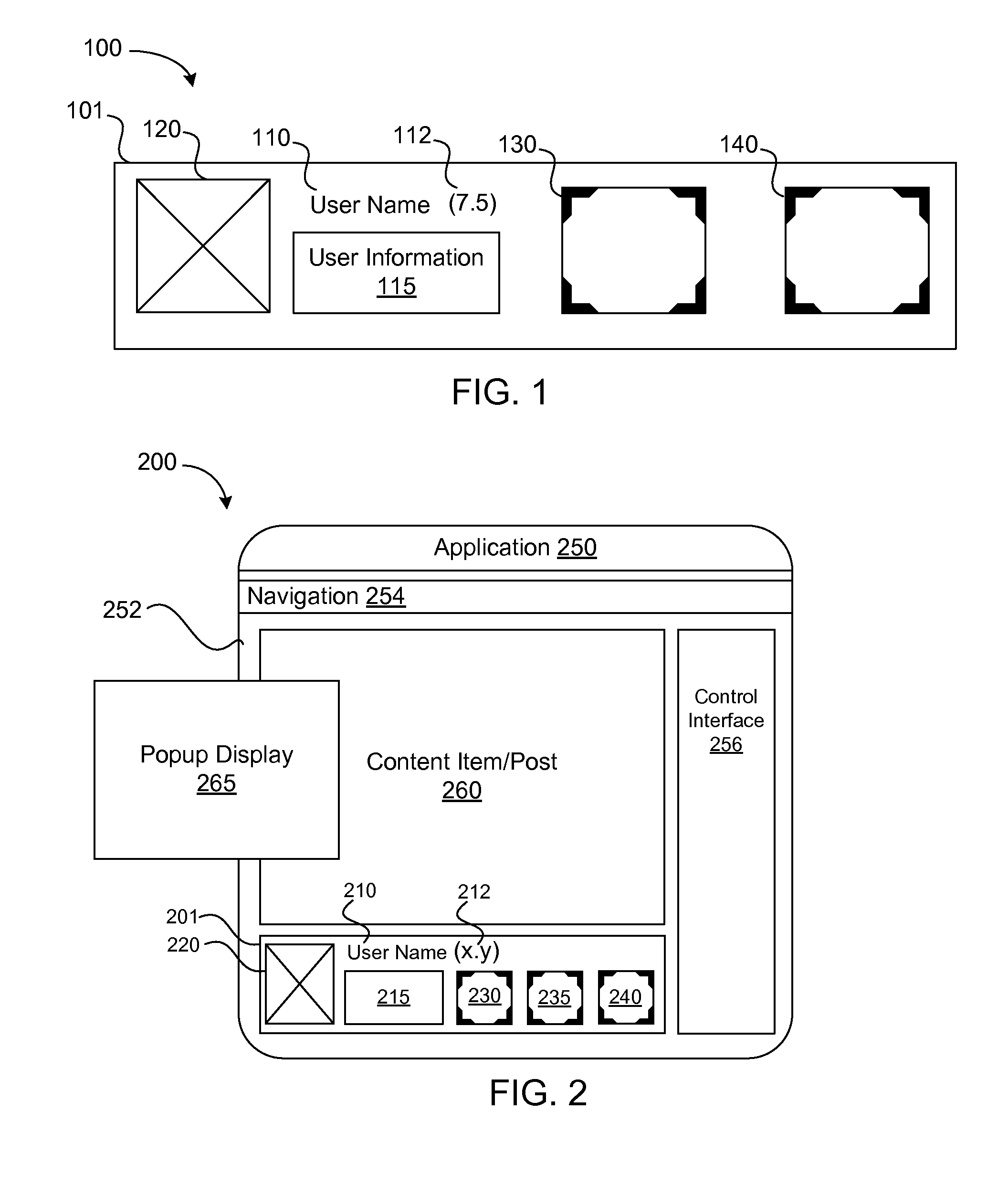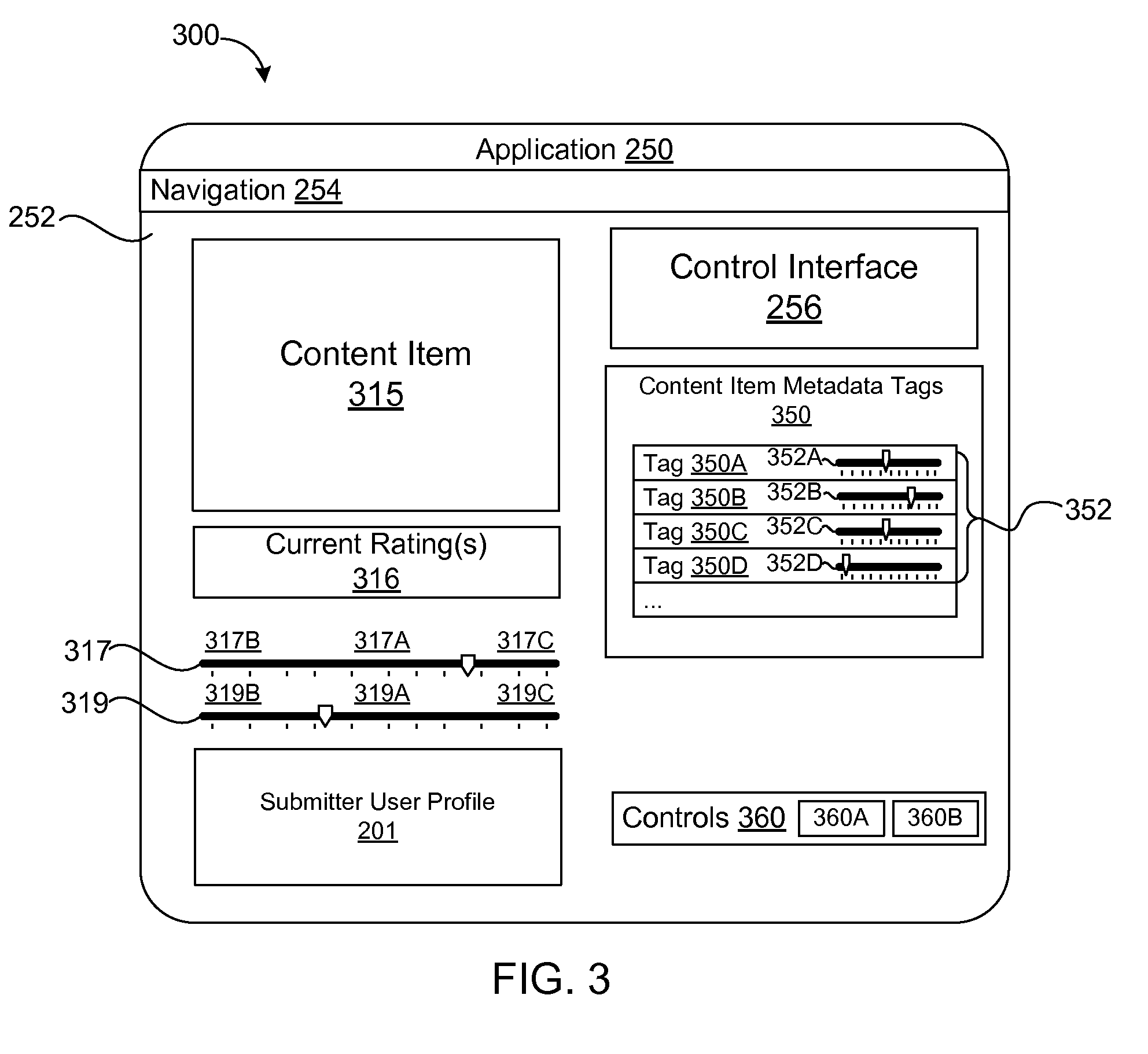Systems and methods for selecting and presenting representative content of a user
- Summary
- Abstract
- Description
- Claims
- Application Information
AI Technical Summary
Benefits of technology
Problems solved by technology
Method used
Image
Examples
Embodiment Construction
[0015]Websites and services (collectively websites) featuring user-submitted content have become very popular and are among the fastest growing websites on the Internet. Many of these websites rely on the quality of the content submitted by their users (i.e., the user “community” of the website or service) to attract and retain users. As such, these websites may wish to induce their users to author and / or submit high-quality content to the website.
[0016]As used herein, user-submitted content may be referred to as a “content item,” or “item” and may include, but is not limited to: an image, an illustration, a drawing, a pointer (e.g., a link, uniform resource indicator (URI), or the like), a map or location-centric content, video content, Adobe Flash® content, audio content (e.g., a podcast, music, or the like), text content, a game, downloadable content, metadata content, a blog post or entry, a collection and / or arrangement of content items (e.g., into a time-sequence, such as a st...
PUM
 Login to View More
Login to View More Abstract
Description
Claims
Application Information
 Login to View More
Login to View More - R&D
- Intellectual Property
- Life Sciences
- Materials
- Tech Scout
- Unparalleled Data Quality
- Higher Quality Content
- 60% Fewer Hallucinations
Browse by: Latest US Patents, China's latest patents, Technical Efficacy Thesaurus, Application Domain, Technology Topic, Popular Technical Reports.
© 2025 PatSnap. All rights reserved.Legal|Privacy policy|Modern Slavery Act Transparency Statement|Sitemap|About US| Contact US: help@patsnap.com



